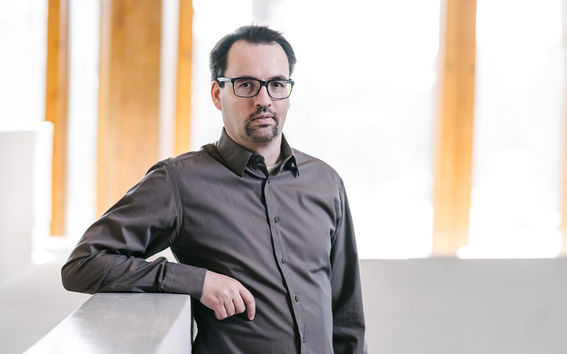Jussi Rintanen knows how to find the right option from among the countless possibilities

Professor Jussi Rintanen, what do you research on and why?
I have been researching artificial intelligence since the beginning of my career, but the research topics have changed many times. I did my doctoral thesis together with Ilkka Niemelä on non-monotonic logic. In contrast to conventional logical deduction, in which true assumptions necessarily lead to a true conclusion, in non-monotonic logic additional assumptions may cancel earlier conclusions. Take a bird, for example. We assume that it is able to fly, but if we find out that the bird is in fact a penguin, our belief in its flying ability collapses immediately.
After completing my doctoral dissertation, I began to study decision-making after noticing that many automated deduction methods work very well for solving decision-making problems. In essence, it is a question of how a chain of actions can get us from our starting point to our desired objective.
In artificial intelligence research, the challenge is often that we do not know how things – such as the language spoken by people – actually function. In contrast to this, in our research we do know the actions that can be taken, but when there are dozens of them consecutively, and each of them can be carried out in twenty different ways, there are so many possible combinations that there is no way to consider each and every one separately. In such situations, the algorithm-based artificial intelligence we have developed can help by computing the best solution.
Computers are used these days to do many kinds of planning, such as route networks for buses and airline companies, timetables and crew scheduling. The plans don’t work, however, if there is a fault with the plane or crew members fall ill. In such situations, we today rely on people’s rather imperfect decision-making, even though these decisions could be made better using artificial intelligence.
How did you become a researcher?
I got into computing already when I was young. My father was one of Finland’s first programmers, and we of course bought a home computer as soon they became widely available. I began programming on the seventh grade, and in high school I began to think about computer science and whether it could be used to solve complex problems. At university, I quickly realised that that is exactly what it is used for, and I soon found work as a research assistant, and straight after graduating began my doctoral thesis research.
What have been the highlights of your career?
My doctoral defence, definitely – that feeling that I myself had achieved something very big and that I understood a lot more about the topic than I had before. At that time, there were far fewer doctoral candidates than today, especially in computer science, and at 28 I was quite young as well.
What is required from a researcher?
I think that a researcher must be curious. I have always chosen my own research topics, and right now, in fact, we are doing research on automating programming in a way that no one else in the world is currently doing – and a way which we think is very promising.
What do you expect from the future?
I am very interested in IT research that has a social impact. We currently have a commercialization project with the aim of providing technology for companies to automate much of routine programming so that software systems can be produced quickly and cheaply.
Jussi Rintanen and Aalto’s other newly tenured professors will speak about their research at the Installation Talks event to be held on 24 April. We hope to see you there!
See the program here.
- Published:
- Updated:
Read more news

DeployAI Partners Gather for Heart Beat Meeting in Helsinki
The European DeployAI project's partners gathered for the Heart Beat meeting hosted by Aalto University Executive Education in Helsinki.
Get to know us: Associate Professor Maria Sammalkorpi
Sammalkorpi received her doctorate from Helsinki University of Technology 2004. After her defence, she has worked as a researcher at the Universities of Princeton, Yale and Aalto.
Aalto computer scientists in ICML 2024
Computer scientists in ICML 2024